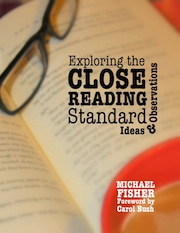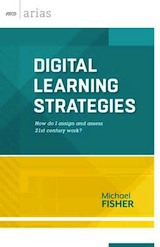A Critical Look at the Close Reading Standard
“Read closely to determine what the text says explicitly and to make logical inferences from it; cite specific textual evidence when writing or speaking to support conclusions drawn from the text.” — English Language Arts Standards » Anchor Standards » College and Career Readiness Anchor Standards for Reading » 1

Close reading is not a thing.
It is not a skill. It is not a big idea. It is not new.
It is an iteration of New Criticism in a new Common Core chrysalis. The caterpillar—traditional literary lenses, among them Formalist criticisms, Reader-Response criticisms, and, perhaps, Structuralism—went through a transformation and have emerged as a new butterfly of comprehension and evidence.
Let’s read the close reading standard more closely
If we look at just the words read closely in a contextual way, what do you think the relationship is to the remaining words in this anchor standard?
When these two words are separated from the remaining 29 words, a misinterpretation of the standard emerges as a potential separate skill, though other necessary skills here are more distinctly apparent and important (if one closely reads the standard):
- determine what the text says explicitly,
- make logical inferences,
- cite textual evidence,
- support conclusions.

If we want to dive into a specific portion of text (or comparison of texts) with a purpose, everything that is viewed through the magnifying glass deepens students’ development of the entire anchor standard’s learning expectation.
Using the magnifying glass is not a skill to be learned, it is simply a tool to amplify this standards’ priorities.
Reading closely is never mentioned elsewhere
Consider this: the anchor standard is the ONLY place that the phrase “read closely” is mentioned; it is not used again in any grade-specific reading standards.
When we focus on only a portion of a standard or decide to agree with what vendors tell us, then we lose the intention of the standard. The intention of this standard, and all of the other reading standards, is for students to comprehend what they read. Reading closely is great, but that is not the objective. Reading comprehension is the objective.
In order to get to comprehension, the focus should not necessarily be on all the ways students could closely read a text, but on the evidence students provide for thinking what they think. Perhaps metacognition could be the real focus. The important words in the standard are not necessarily “read closely…” but rather “…what the text says explicitly.”
The expectations change in sixth grade

In sixth grade, the students have to “cite evidence” that supports their thinking, which becomes sophisticated over time depending on the best evidence to support their thinking and evidence across multiple texts.
These growing expectations can be met through close reading (as a label for textual analysis) and also through new questioning habits that focus on the details. This can be done whether we are developing “close reading” lesson plans or not.
Let’s put “close reading” in its place
Close Reading is a lens through which we view the multiple ways in which we analyze text. Close reading is about the way we use evidence in text and the way we engage with the text when we ask and answer questions about it. Close reading is primarily about developing better comprehension habits.
What do good readers do when they read? They examine. They connect. They decode. They acquire. They discover. They think. They annotate. They visualize. They comprehend. They uncover.
These are the verbs. These are the skills. These are what really matters.
For more about Mike Fisher’s stance on Close Reading, his new eBook, Exploring the Close Reading Standard: Ideas and Observations, is now available on Amazon Kindle ($4.99).


































